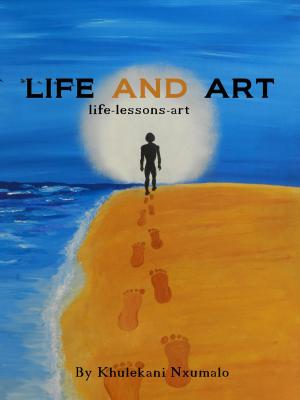Seeing Inside the Universe (Book 4 of Minds in Bloom)
Nonfiction, Reference & Language, Education & Teaching, Special Education, Gifted, Health & Well Being, Self Help, Self Improvement| Author: | Glenn Fieber | ISBN: | 9781311232496 |
| Publisher: | Glenn Fieber | Publication: | February 3, 2014 |
| Imprint: | Smashwords Edition | Language: | English |
| Author: | Glenn Fieber |
| ISBN: | 9781311232496 |
| Publisher: | Glenn Fieber |
| Publication: | February 3, 2014 |
| Imprint: | Smashwords Edition |
| Language: | English |
Seeing Inside the Universe is the final piece of a puzzle whose shape and purpose remains a mystery. As thinking beings, we like to have answers, yet there is so much of the unknown around us and within us that any attempts at explaining it must be done with a humble and open spirit, with the understanding that what you say is most likely only a part of some greater truth, and is possibly completely wrong. In Book 4, I begin with a look at the way our minds—so vast that they are each really universes on their own—are shaped by culture and the tools and interactions of daily life. Then in (Foods for Thought) I consider some of the many unexplained mysteries that we bump up against in our daily lives. Since they are “unexplainable”, we just accept them (miracles, levitation, walking on coals, the healing power of prayer and music, mystics who live without eating, feng shui, near-death experiences…)—but we most likely secretly harbor the notion that there is some trick involved, if we only knew. As if we were witnessing another Chris Angel or David Copperfield performance. We wonder, too, how granite stones weighing 50 tons at Ollantaytambo in Peru were lifted up a mountain peak and shifted perfectly into place as if they were made of Styrofoam. Then, because we cannot satisfactorily explain such events (20,000 workers with ropes?), we turn our attention away. But if, instead of avoiding the mysteries of the universe, we embraced them, our world would be richer.
Seeing Inside the Universe is the final piece of a puzzle whose shape and purpose remains a mystery. As thinking beings, we like to have answers, yet there is so much of the unknown around us and within us that any attempts at explaining it must be done with a humble and open spirit, with the understanding that what you say is most likely only a part of some greater truth, and is possibly completely wrong. In Book 4, I begin with a look at the way our minds—so vast that they are each really universes on their own—are shaped by culture and the tools and interactions of daily life. Then in (Foods for Thought) I consider some of the many unexplained mysteries that we bump up against in our daily lives. Since they are “unexplainable”, we just accept them (miracles, levitation, walking on coals, the healing power of prayer and music, mystics who live without eating, feng shui, near-death experiences…)—but we most likely secretly harbor the notion that there is some trick involved, if we only knew. As if we were witnessing another Chris Angel or David Copperfield performance. We wonder, too, how granite stones weighing 50 tons at Ollantaytambo in Peru were lifted up a mountain peak and shifted perfectly into place as if they were made of Styrofoam. Then, because we cannot satisfactorily explain such events (20,000 workers with ropes?), we turn our attention away. But if, instead of avoiding the mysteries of the universe, we embraced them, our world would be richer.















